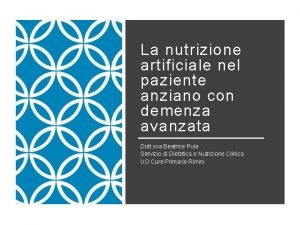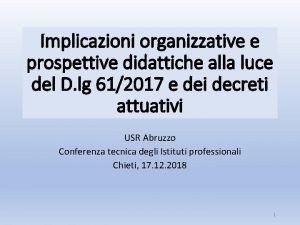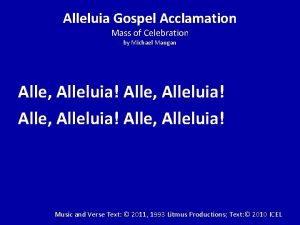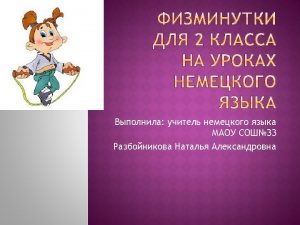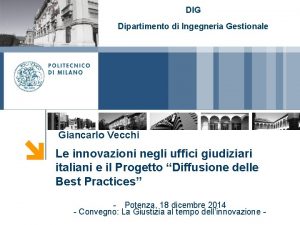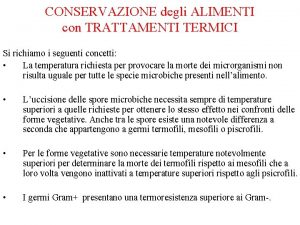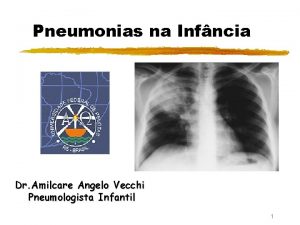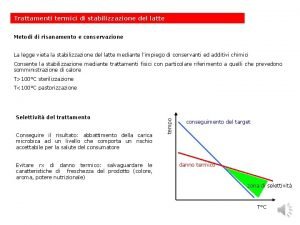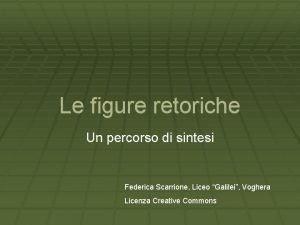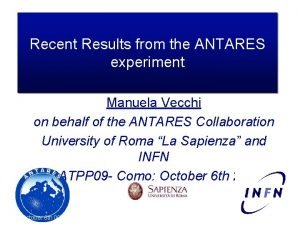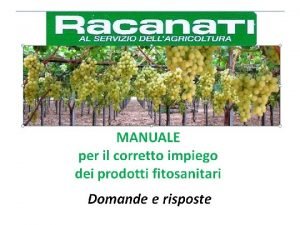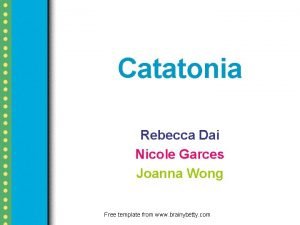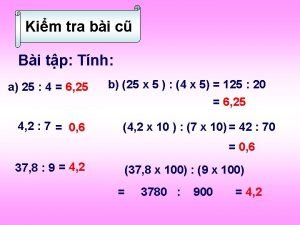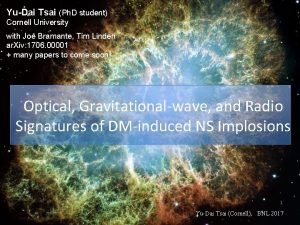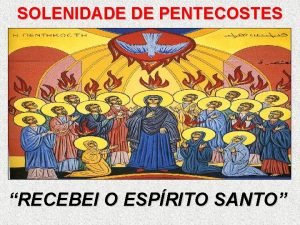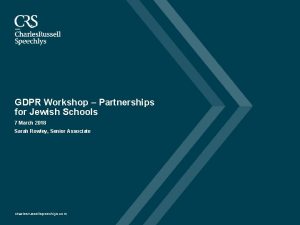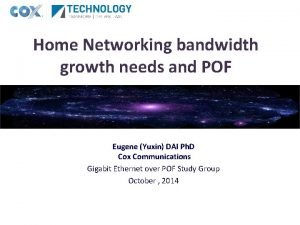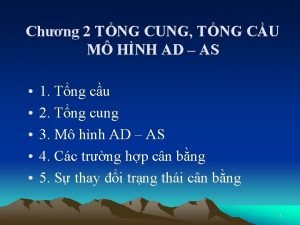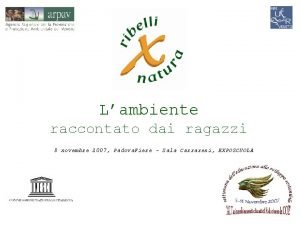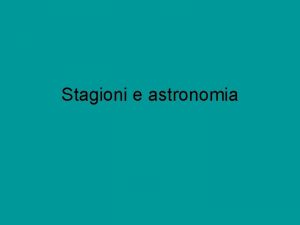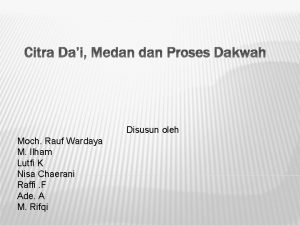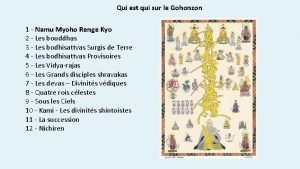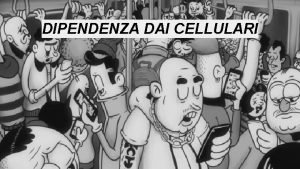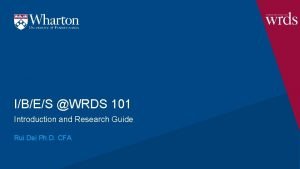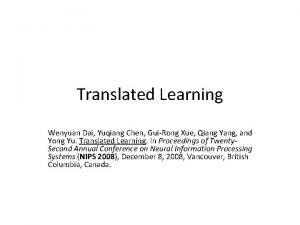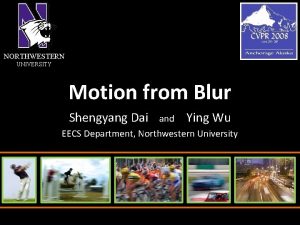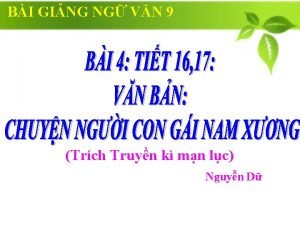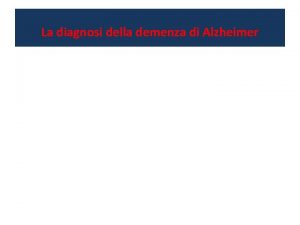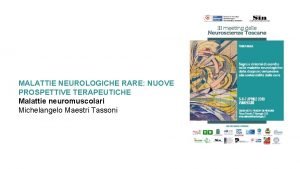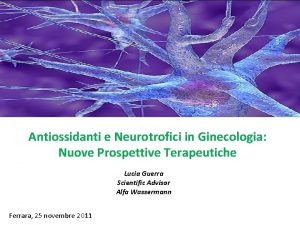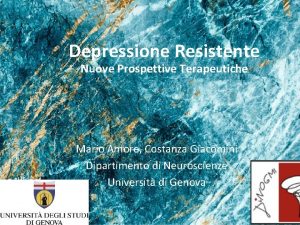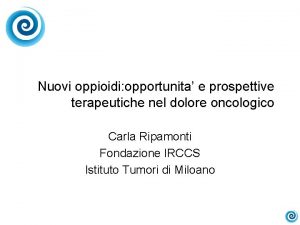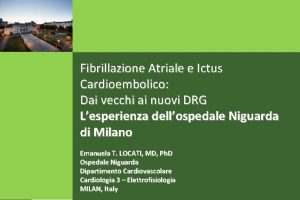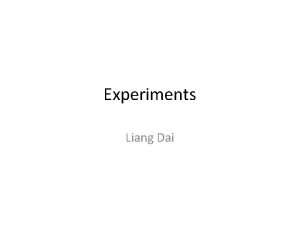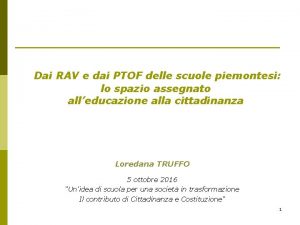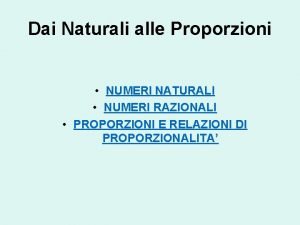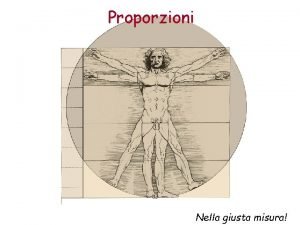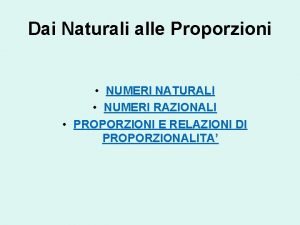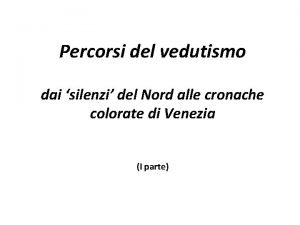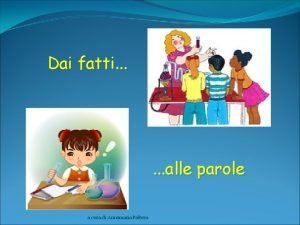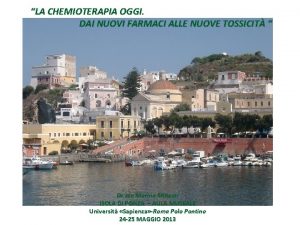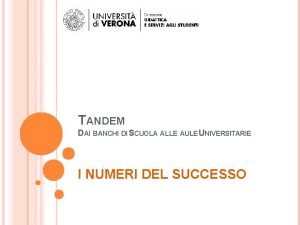La demenza dai vecchi trattamenti alle prospettive terapeutiche








































- Slides: 40

La demenza: dai vecchi trattamenti alle prospettive terapeutiche Dott. ssa Gemma Lombardi Dipartimento NEUROFARBA – Università di Firenze

Dalla patogenesi della M. di Alzheimer alle strategie terapeutiche: Ipotesi Colinergica, Amiloidogenica e Taugenica

Timeline of Alzheimer’s disease therapies 1993 ACh. E inhibitors 20 early-moderate Alzheimer’s patients received a single dose of AN-1792 Tacrine: First clincial trial Cholinergic Hypothesis AMYLOID HYPOTHESIS 1999 -2000 Tau, mithocondria. . hypothesis ? The VACCINES ERA 2010

NON SOLO AMILOIDE (Selkoe D e Hardy J, EMBO, 2016)

Inflammatory hypothesis Cell-cycle regulation hypoyhesis Tau hypothesis Amyloid hypothesis Vascular hypothesis Mithocondria hypothesis Calcium hypothesis NEURODEGENERATION

2010

AD: DISEASE MODIFYING STRATEGIES AGENTI CHE RIMUOVONO AMILOIDE AGENTI CHE RIDUCONO PRODUZIONE DI AMILOIDE AGENTI ANTITAU

2017 105 agenti farmacologici di cui: 25 in Fase I 52 in Fase II 28 in Fase III 70% Disease Modifying



2013 -2014

MOTIVI DEL FALLIMENTO ? Fase avanzata di malattia Selezione scorretta Preclinical model: topo-uomo Cascata amiloide Passaggio della BEE Dosaggio/sicurezza Target del farmaco

ANTICORPI ANTIAMILOIDE: sono tutti uguali? NO (Scheltens P, Lancet, 2016)

ANTICORPI ANTIAMILOIDE: sono tutti uguali? NO Tossicità (Scheltens P, Lancet, 2016)


ADUCANUMAB: studio di fase 1 b Studio randomizzato, controllato, in doppio cieco Aducanumab (a dosi diverse)/placebo in soggetti prodromal o mild AD (MMSE>20) e Aβ PET+ (durata 12 mesi) valutare sicurezza e tollerabilità + “exploratory clinical endpoints” (Sevigny J, 2016)

ADUCANUMAB Effetti sull’imaging (PET con Florbetapir): ADUCANUMAB riduce il carico di amiloide alla PET in modo dose e tempo dipendente (p<0, 001) (non influenzato da apo E ) (Sevigny J, Nature, 2016)

ADUCANUMAB CDR-SOB: a 1 anno rallentamento nella progressione clinica nel gruppo Aducanumab 10 mg/Kg vs placebo (p<0, 05, non corretto per c. m. ) *

ADUCANUMAB MMSE: a 1 anno rallentamento nella progressione clinica nel gruppo Aducanumab 3 e 10 mg/Kg vs placebo (p<0, 05, non corretto per c. m) * *

ADUCANUMAB: ARIA: amyloid-related imaging abnormalities ARIA-E: vasogenic-edema: dose dip , apo. E ARIA-H: ARIA haemorrhages or superficial siderosis 20%

AMYLOID OR NOT AMYLOID

(Graham WV et al) (LMTX) (Gauthier S, 2016) (Novak P, 2017) Phase II

IMMUNOBLOT: Anticorpi (prodotti alla 24 settimana dopo 6 dosi) riconoscono le forme patologiche di tau (linea 1 e 2) NO meningoencefalite, NO edema vasogenico Anticorpi con affinità > per forma troncata di tau rispetto alla forma tau fisiologica “ 2 N 4 R” (Nova. K P, Lancet Neurol, 2017)

• Trattamenti che promuovono funzione neuronale • Stem cell therapy • Neuroprotezione e antifiammatori

Treatments to promote neuronal function In Phase II trials, the cholinesterase and monoamine oxidase B inhibitor, Ladostigil (TV-3, 326), which acts in combination with activation of a number of trophic factors showed positive trends in the primary end point of delaying or preventing onset of AD. This drug has is now being tested in patients with Mild Cognitive Impairment (MCI). After 2 years of treatment, a positive trend of the ladostigil treated group in comparison to the placebo treated group was observed in the number of patients who did not progress from MCI to AD. There are plans to proceed to Phase III trials.

Neuroprotezione e antinfiammatori RAGE, recettore per i prodotti di glicazione avanzata

AZELIRAGON (x os, fase III in AD lieve) Inibisce l’afflusso di Aβ 40 e Aβ 42 circolanti verso il cervello e inibisce la beta-secretasi Inibisce l’attivazione della microglia (Deane R, 2012)

Regenerative medicine in Alzheimer’s disease ? ? ? We can define regenerative medicine broadly as approaches that use stem cell-based therapies or approaches that seek to modulate inherent neurogenesis. Neurogenesis, although most active during prenatal development, has been shown to continue in several small parts of the brain, including the hippocampus and the subventricular zone, suggesting its potential to reverse cognitive deficits. If AD pathology affects neurogenesis, then it follows that conditions that stimulate endogenous neurogenesis (eg, environmental stimuli, physical activity, trophic factors, cytokines, and drugs) may help to promote the regenerative and recovery process.

Taxi driver It seems that there is a capacity for local plastic change in the structure of the healthy adult human brain in response to environmental demands

implantation site ANIMAL MODEL • Dopo il trapianto le cellule si dividono e migrano con trofismo e diventano integrate nel tessuto ospite di ratto. • Veicolo per l’espressione di proteine potenzialmente terapeutiche Neurotrophic effects of NGF on cholinergic neurons


Cellule neuronali e gliali sono state generate da stem cells come embryonic stem cells (ESCs), induced pluripotent stem cells (i. PSCs), mesenchymal stem, cells (MSCs) and neural stem cells (NSCs) A recent study has indicated that patients’ own fibroblasts could directly be converted into neurons by combinatorial expression of 4 transcription factors



Stem cell therapy The first is a combined Phase I/II clinical trial investigating the safety, dose limiting toxicity, and exploratory efficacy of three repeated intraventricular administrations of NEUROSTEM® versus placebo. No adverse reactions to allogeneic versus autologous MSC transplants have been observed so far. Clinical studies showed that umbilical cord derived MSCs are immunologically stable and not Toxic. A second Phase I/II study of umbilical cord MSCs is also ongoing A Double-blind, Single-center, Phase 1/2 a Clinical Trial to Evaluate the Safety and Exploratory Efficacy of Intraventricular Administrations of NEUROSTEM® Versus Placebo Via an Ommaya Reservoir in Patients With Alzheimer's Disease

Neuropeptides. 2017: Modelli sperimentali


Dopo un anno di DBS migliora il profilo metabolico alla FDG PET

Cosa fare: Prevenzione Ø In assenza di una terapia efficace la prevenzione riveste un ruolo di primaria importanza

 Malnutrizion
Malnutrizion Dai programmi alle indicazioni nazionali
Dai programmi alle indicazioni nazionali Teorie sulle emozioni
Teorie sulle emozioni Prospettive didattiche/lisa
Prospettive didattiche/lisa Alleluia gospel acclamation
Alleluia gospel acclamation En for alle alle for en
En for alle alle for en Eins zwei drei alle
Eins zwei drei alle Giancarlo vecchi polimi
Giancarlo vecchi polimi Trattamenti termici alimenti
Trattamenti termici alimenti Angelo vecchi
Angelo vecchi Trattamenti termici del latte
Trattamenti termici del latte Preterizione esempi
Preterizione esempi Manuela vecchi
Manuela vecchi Cosa sono i trattamenti a calendario
Cosa sono i trattamenti a calendario Rebecca dai
Rebecca dai Một thanh sắt dài 0 8m cân nặng 16kg
Một thanh sắt dài 0 8m cân nặng 16kg Dr. yu-dai tsai
Dr. yu-dai tsai Canto o pai que pelo espirito dais vida e santidade
Canto o pai que pelo espirito dais vida e santidade Dai durbridge
Dai durbridge Pof bandwidth
Pof bandwidth La vita che avrai non sarà mai distante dall'amore che dai
La vita che avrai non sarà mai distante dall'amore che dai đường tổng cung dài hạn (las) có dạng là
đường tổng cung dài hạn (las) có dạng là Dai ragazzi padova
Dai ragazzi padova Il circolo di illuminazione passa sempre dai poli
Il circolo di illuminazione passa sempre dai poli Teori citra dai
Teori citra dai Le gohonzon
Le gohonzon Quante volte tocchiamo il cellulare
Quante volte tocchiamo il cellulare Naci dai
Naci dai Video kỹ thuật hút đờm dãi
Video kỹ thuật hút đờm dãi Ibes_rui
Ibes_rui Thân dài nhiều áo bọc quanh
Thân dài nhiều áo bọc quanh Dai yuqiang
Dai yuqiang Mimi dai
Mimi dai Shengyang dai
Shengyang dai Ngắn dài có số, tươi héo bởi trời
Ngắn dài có số, tươi héo bởi trời Abençoa o senhor nossa oferta dai-nos tua paz
Abençoa o senhor nossa oferta dai-nos tua paz Problemi causati dai videogiochi
Problemi causati dai videogiochi Sông hương là một bức tranh phong cảnh khổ dài
Sông hương là một bức tranh phong cảnh khổ dài Funeral banner of lady dai
Funeral banner of lady dai Pianticella a spiga dai fiori azzurri
Pianticella a spiga dai fiori azzurri Indicaciones dai
Indicaciones dai
